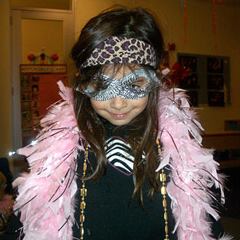Play: Zero to Four Years
It’s only mid-January and so many of our younger students can barely remember what they received as presents over the holidays. While it’s fun to both give and receive gifts we at Shine think the best presents at any age are less about the cost and packaging and more about giving something that lasts far beyond the moment. Whether it’s books and reading together, instruments and music, costumes, art supplies, cooking and baking together, or hitting the town on a City Adventure, the best gifts are the ones that provide experience, community and togetherness.
In our blog article this week, Kristin Michaelson, M.Ed, president of Advantage Development, provides some helpful at home play tips for children under 5. All of her suggestions continue to support ideas of connection and creativity while reinforcing important developmental stages.
Continue to shine your light –
Aaron Goldschmidt, founder & director
After the holidays, parents are faced with an amazing amount of new toys and games in their home. Instead of these new acquisitions causing clutter without sustained periods of play by your children, use the below ideas to inspire your at-home play. Note: while these activities or toys do not stop being helpful to development at the end of the given period, this is when introduction can be most beneficial.
 Birth to 12 months: Using new instruments and CDs
Birth to 12 months: Using new instruments and CDs
Interacting with your child, and acknowledging your child’s attempts at interaction, is essential during this period for development and bonding. One of the ways that parents often choose to play with their baby is by singing. Try leaving a few words out when singing a familiar song, instead pausing for a moment. Even if your child cannot yet speak their little brains are working on figuring out the word that you left out. This exercises their memory and allows your child to participate in the song. Use those new instruments and CDs, along with waving around winter scarves, to sing and move with your child. Repetition of songs and movements will cement them in your little one’s brain.
1-year-old to 2-years-old: A new way to say goodnight and read books
At night when you are talking with your child or reading books, tell them about their day. If you have a caregiver, ask them to jot down a few notes about the day so you can always have something special to share at bedtime. This encourages children to put together the seemingly disparate parts of their day and start to see patterns and the new things that happened that day. They will continue the work while they are sleeping when much of the processing and formation of memories occur. To expose your child to more grouping and patterns, a few nights out of the week pick a theme for the bedtime stories. A great way to introduce all of those new books. Children closer to two-years-old will be able to help sort books by category, using pictures on the covers.
3-years-old to 4-years-old: Costumes are important for play
At this age many children are already in school or will be going soon. Give them time to practice working together with other children through playdates, classes and time at the park. Especially in evidence at this age is the increasing amount of pretend play. Make sure children have lots of costumes and props (home-made or store-bought) as well as time to see you or older children model fun make-believe scenarios. To help with their pretend scenarios, remind them of favorite books and write stories together based on their toys and interests. Once the kids know what to do, their imaginations really take off.
By Kristin Michaelson, M.Ed., President of Advantage Development
